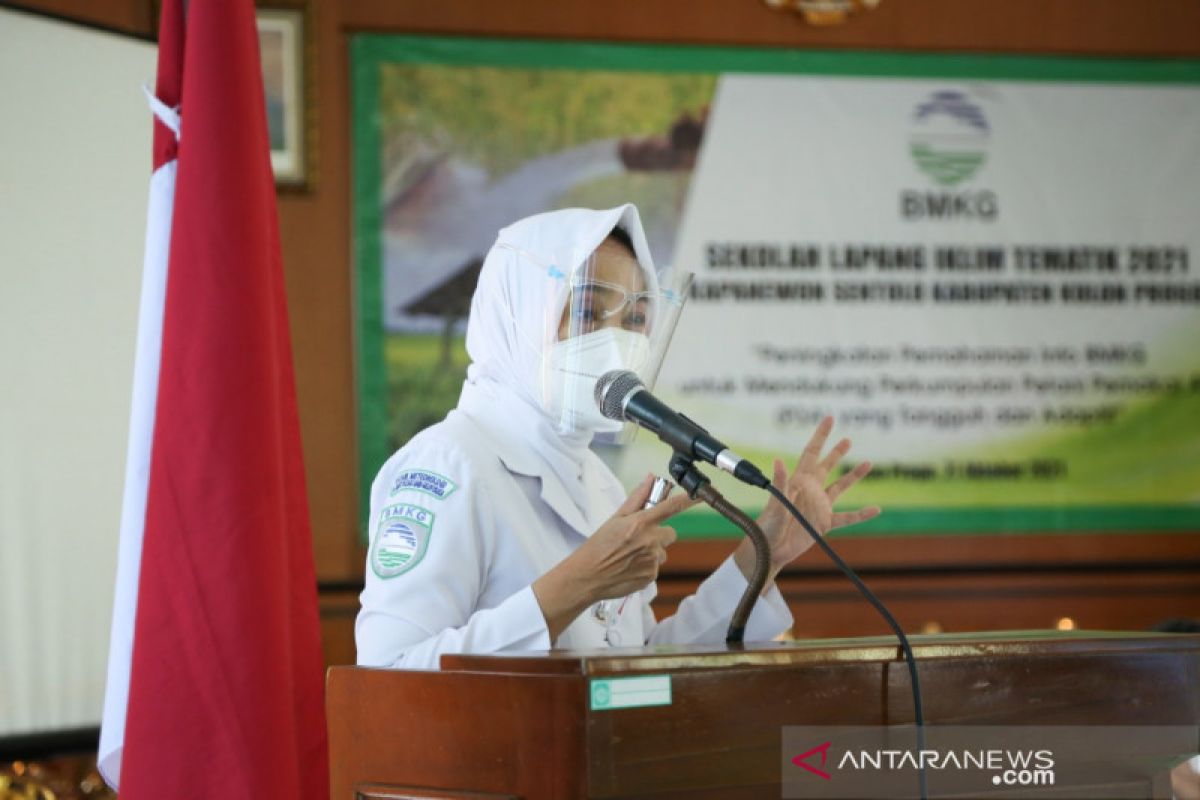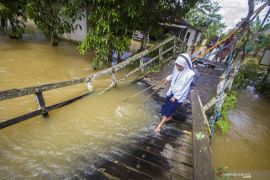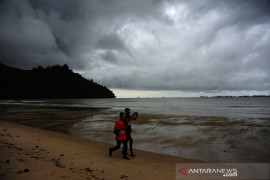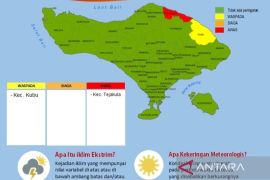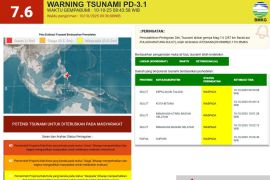Weak La Nina has been developing in October 2021 and is expected to strengthen in November and December and become a moderate La Nina by the end of 2021 to February 2022, Karnawati noted in a press release here on Saturday.
La Nina phenomenon could cause an increase in rainfall that could trigger a hydrometerological disaster in Indonesia, she remarked.
"This can certainly increase the potential for hydrometeorological disasters, such as strong winds, floods, flash floods, and landslides," she remarked.
"It needs to be addressed appropriately by the entire community, especially farmers, so that excessive rainfall does not cause losses to agriculture," he emphasized.
Related news: Anticipatory steps key to tackle La Nina events: BMKG
Speaking during the Thematic Climate Field School (IDD) activities in Yogyakarta on Thursday (Oct 21), Karnawati explained that IDD aims to increase the farmers' knowledge of weather and climate patterns that is useful for planning farming schedules to produce maximum harvest.
According to Head of the agency's Climate Change Information Center, Dodo Gunawan, IDD encourages the use of climate information for preparing planting patterns, making water management arrangements, and conducting disaster mitigation due to weather disturbances.
Indonesia, with monsoon and dry seasons, is prone to natural disasters, and usually some 75 percent of the disasters are hydrometeorological in nature, such as flooding, landslides, and strong winds.
La Nina, which means the Little Girl, usually triggers torrential downpours and widespread flooding across the country.
Related news: BMKG warns of potential hydrometeorological disasters
Translator: Prisca TV, Fardah
Editor: Rahmad Nasution
Copyright © ANTARA 2021
